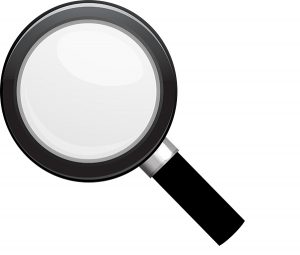 Investigative reporting is not easy as a freelance journalist, but it’s not impossible either.
Investigative reporting is not easy as a freelance journalist, but it’s not impossible either.
The Health Journalism 2019 session on investigative reporting for freelancers on Saturday revealed tips, resources and success stories to inspire freelancers to dig deeper into those suspicions they have about a story — and the hundreds or thousands of documents that it likely involves.
One of the first steps is honing in on your key questions, advised Liza Gross, a freelance investigative reporter and author of the fantastic resource, “The Science Writers’ Investigative Reporting Handbook: A Beginner’s Guide to Investigations.”
“As a freelancer, you can’t afford to go on fishing expeditions,” Gross said, noting that many public records can amount to thousands of papers. So “do enough reporting to develop a working hypothesis” and use that to lay out your plan. Identify the material you need to test your assumptions (people, data, documents, site visits) and seek guidance from sources. From there, identify what the most and least are that can come from your reporting.
“If your grand investigative story doesn’t pan out, what’s the minimum story that can come out?” Gross said. For example, Gross describes how she began one story with the expectation of finding that “California is exposing its most vulnerable citizens to the most dangerous pesticides.” But such a story could involves millions of pesticides records, a massive review of studies and demographic data for multiple counties.
So she scaled down to “one California town faces highest risks from known neurotoxic pesticide” — a story published in The Nation in 2015. (For a much more in-depth discussion of Gross’s process for the story, check out the excellent profile/Q&A in The Open Notebook about her.)
It was in reporting this story that she discovered the value of partnering with guides and working with academics. Sometimes the data, or data analysis, you need already has been compiled and analyzed, or can be, by reliable, trustworthy researchers. Either way, it’s up to you to have a plan for fitting everything you find into the big picture.
“I cannot emphasize enough the importance of staying organized,” Gross said. “I was quickly overwhelmed by sheer volume of material” in her California pesticides story. She recommends keeping a reporting diary and annotating analyses “so you know how you know what you know,” including data sources and processing steps. A spreadsheet or some other method of tracking documents, records requests, data, sources, interviews and other resources is also essential.
And while timelines are helpful with almost any story, they’re particularly important with investigative stories because they can help you see linked elements or draw connections or notice patterns you might otherwise have missed. At the same time, those connections could grow from your own biases, so “check your biases with a trusted sounding board,” she suggests. That could be a colleague, an editor, a contact at a journalism organization, etc.
It might also be a contact through a funding foundation supporting your work, such as the Food and Reporting Environmental Network (FERN) which supported Gross’s California pesticides story. Gross’s tip sheet, available for download here, includes a list of organizations that provide grants for investigative reporting.
Finally, Gross discussed the importance of protecting yourself. A partnering foundation can sometimes help shield you from liability, but you should also take steps to ensure you have a reasonable, fair contract with the publication that will publish your story. Avoid signing indemnity clauses — or at least add qualifying language — and insist on a written agreement that the outlet’s lawyer will represent you. (Liability insurance is another option.)
Of course, even all this advice can sound intimidating if you’re new to investigative reporting, so another session speaker Laird Townsend, director of Freelance Investigative Reporters and Editors (FIRE), described how FIRE can support both new and experienced freelance investigative journalists. FIRE offers two major opportunities for freelancers: a virtual newsroom (primarily for those who have begun their story and need resources more than advice) and a one-hour editorial consultancy (aimed at those new to reporting or those just beginning to consider a new story).
“You don’t always get the bandwidth of an editor that you need,” Townsend said. “That hour [from the editorial consultancy] has made the difference in saving money or time or advancing a story in an efficient way — either going forward or retreating, but doing so strategically.”
The virtual newsroom, meanwhile, offers all the benefits of a traditional newsroom, including a stable of contract editors, open records coaching, fact-checking, data consulting, data entry, contract advice and other research services (including access to Lexis Nexis). Both of those resources — and the funding grants FIRE offers — require an application but are designed specifically for freelancers working on their own.
Townsend also offered a bit of advice for those applying to various foundations for reporting grants: try to come to the table with already-reported material that shows both your own seriousness and that there really is a story there to pursue. “Your proposal should show some sense of what your writing would look like,” he also added.
In extensive surveys FIRE has done, it has heard over and over how difficult it is to be a freelance journalist and embark on investigative stories, but again, it’s not impossible. Tips from Gross and her books, grants from organizations and resources such as FIRE can help make it happen.






